February 24th, 2015
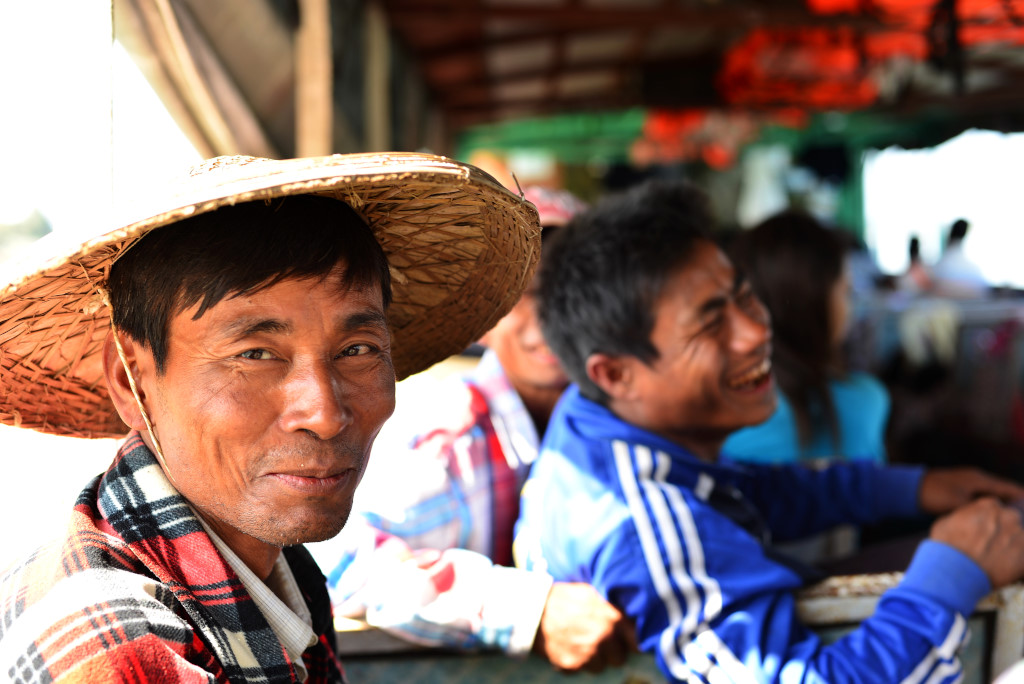
Breakfast at the same roadside eatery I had coffee and cake at when I arrived. The matron running the establishment impresses, from the mild savory chicken curry, to stewed vegetables, including chopped carrots and diced gai lan and cabbage, followed by a dish of deep-fried and spicy buds of some sort, in the vein of fresh capers. In addition, a split yellow pea soup in a weak chicken broth, complimented with fried soy seeds in onion and possible traces of fish paste. As I eat, a few other customers make their appearances, as do crimson-sheathed monks with their alms bowls.
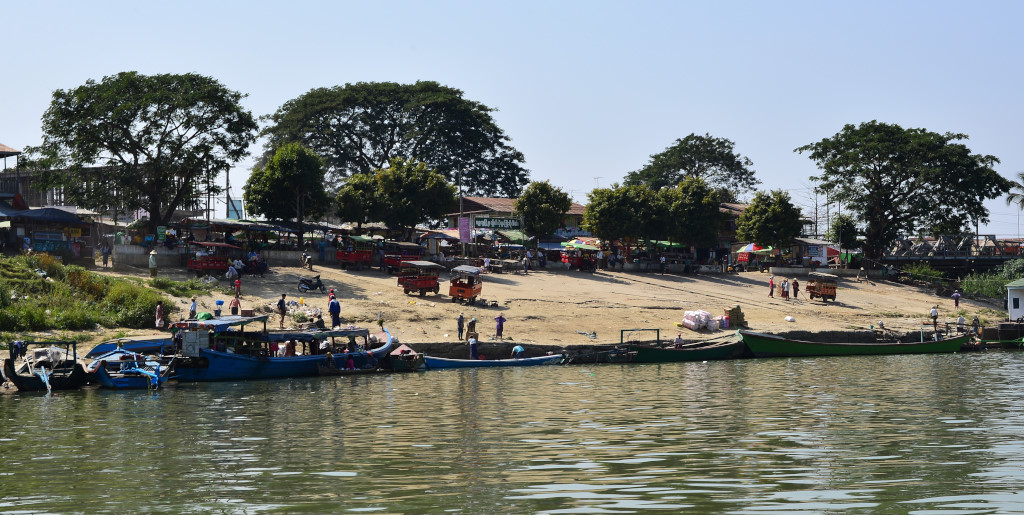
Descending the slope towards the edge of the retaining wall, I am intercepted by a dapper Nepali-Burmese, who tells me he is also waiting for the boat to Katha, his family members milling around him. The boat should in theory be here at 11 am, but as it is coming from Bhamo, it may be delayed. When it does stop here, though, it won’t wait – people will embark and the boat will leave again.
I am hardly very optimistic that the boat would arrive at any predictable time, but it is certainly helpful to know someone on site who could be of assistance, as few will understand any English otherwise. As with many of the Indo-Burmese I see here, his grandparents came from Nepal, some of the many immigrants that came in his grandparents’ generation. Unlike the Indians that arrived at the same time and fully integrated, many of the Nepalis still speak their own language after three generations in the country.
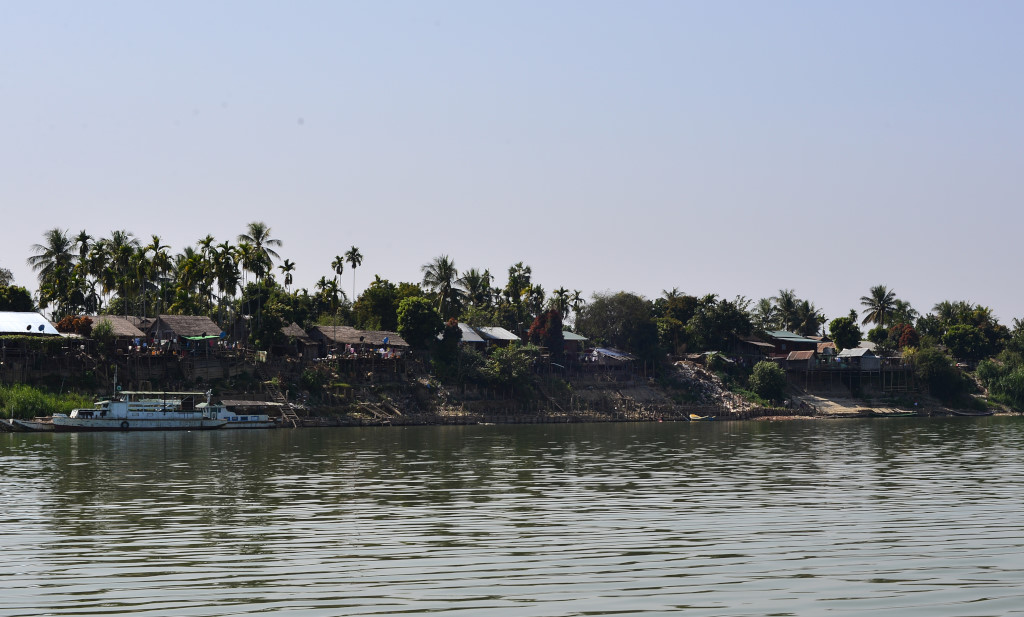
He sells the strings that Hindus wrap their body with, traveling from a town near Myitkyina where he lives, taking the boat to Bhamo, followed by Shwegu, then continuing to Katha, where he takes the bus to some train connection point, finally heading all the way back to his home town by train, presumably transacting business in every one of the locations he visits. What I find curious is that he travels with his entire family entourage the whole way, perhaps mixing business with pleasure. As he speaks with me, his beaming father wanders back and forth aimlessly, the women in his party busy occupied with their children.
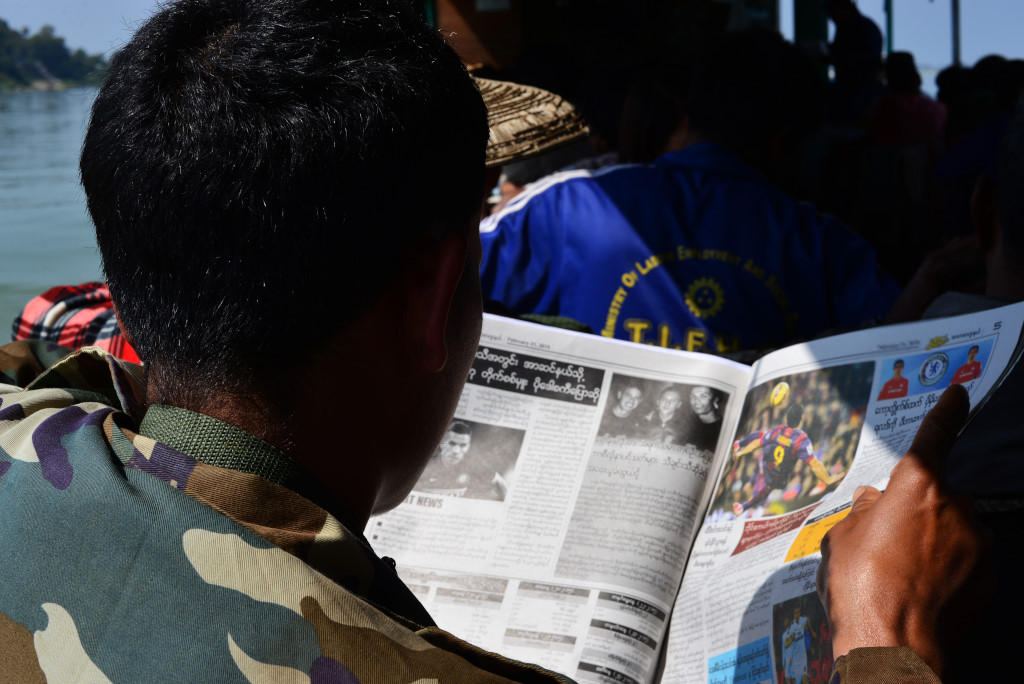
When I comment on how impractical the docking facilities are here, he points to the retaining wall next to us, telling me that in flood the water comes right up to the top of the wall, underlining the vast girth of the Irrawaddy river in flood. The level of the river varies tremendously between dry and rainy seasons, and in the rainy season, it rains constantly.
He asks me what I think about Burmese food. I am frank with him: it is far too oily and doesn’t taste of anything, never mind the horrible predilection for fish paste, although there are really interesting aspects to it. Indian food with its radiant and intense spicing it is not, and the food isn’t gratuitously bathed in oil.
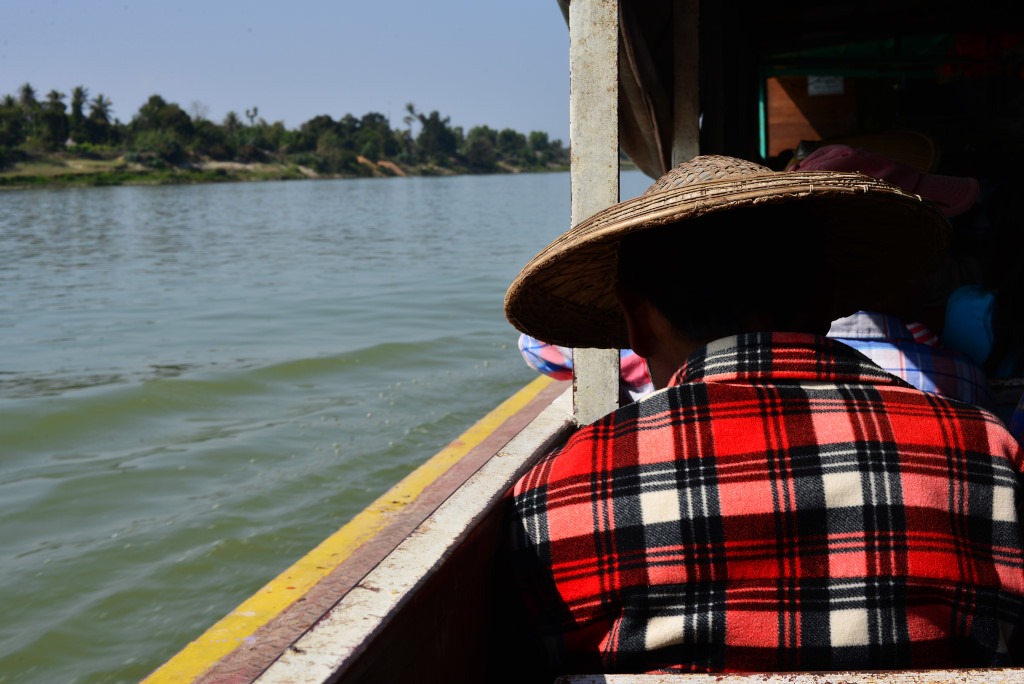
He lived in Thailand for years, presumably earning enough cash to be able to come back and start his own business. Unlike the Burmese, who display a reasonable mastery of English, he was surprised how little English the Thai people speak, considering what a major tourist destination the country is.
While we speak, a dog with a broken paw limps around the area by the wall, sniffing for the remotest possibility of any kind of food. It is ultimately lured to the other side by the smell of the raw chicken being dismembered by one of the cafe workers, a few tiny scraps that fall to the ground devoured by a small puppy, a testimony to the near starvation that dogs here must face.
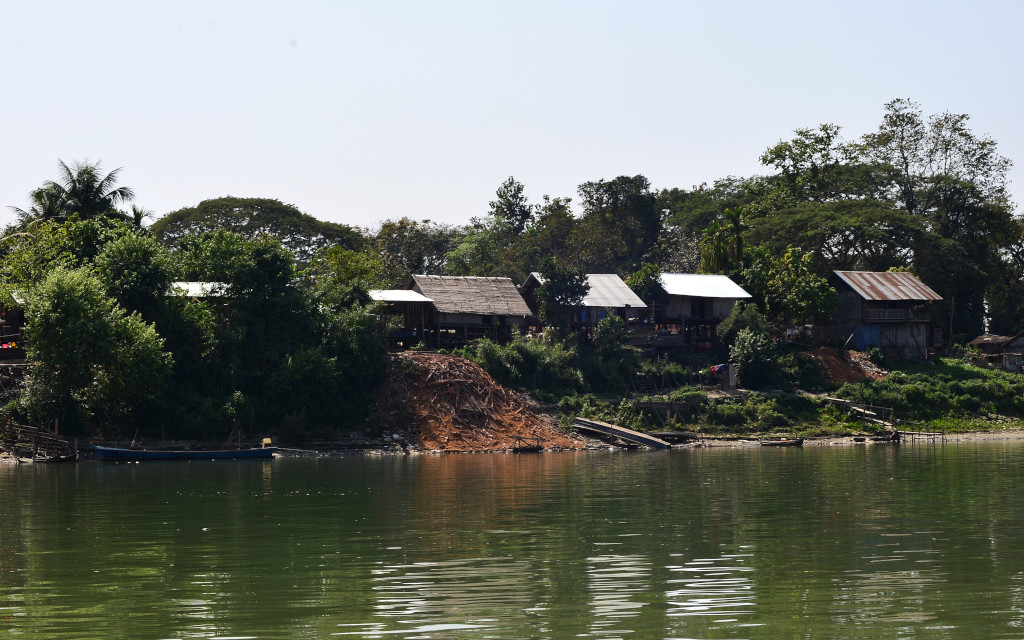
The man pays for my coffee, which of course I protest, as the neighboring parties of locals listen to our conversation with curiosity. He looks at his watch as the anticipated boat arrival time comes and goes, and then noon comes and goes, but still no boat appears. He appears disquieted, but I have very low expectations …
And then, some time later, one of the neighboring locals calls to me to tell me that a boat is coming.
The boat anchors farther down the shore. A horde of people descends in a frenzy along the slippery mud path, certainly not a good time to lose your cool. The Nepali families are not succeeding very well on that front, considering the amount of children and luggage that they have in tow. Unfortunately, a lot of the congestion is created unnecessarily by the flurry of vendors attempting to sell their wares to the captive audience in the boat, but they are really just preventing the passengers from getting on or off the ship.
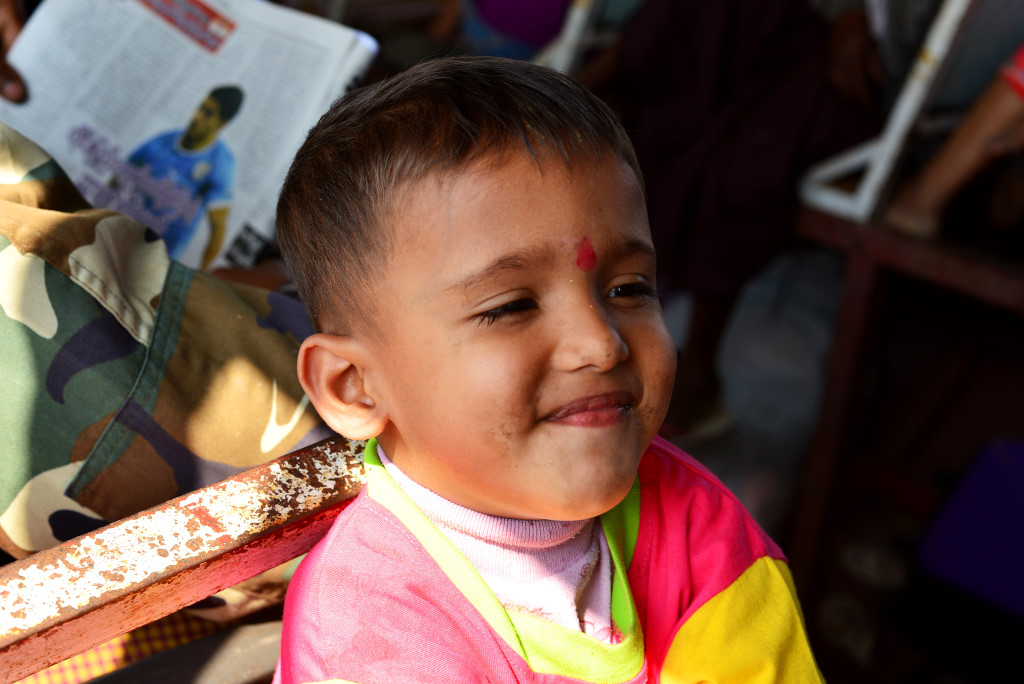
At least this time the ship is close enough to the shore to allow me on to get onto the wide lip of the boat within a few steps of the plank, the wide ledge much safer to walk along, unlike the boat that I came to Shwegu with. I have to follow the frantic people in front of me, but once I climb into the hold, see that the entire span of the boat is taken up by bench seats on either side of a narrow passage, most seats taken, and the free seats occupied by the luggage of single passengers who look defiantly as I pass them.
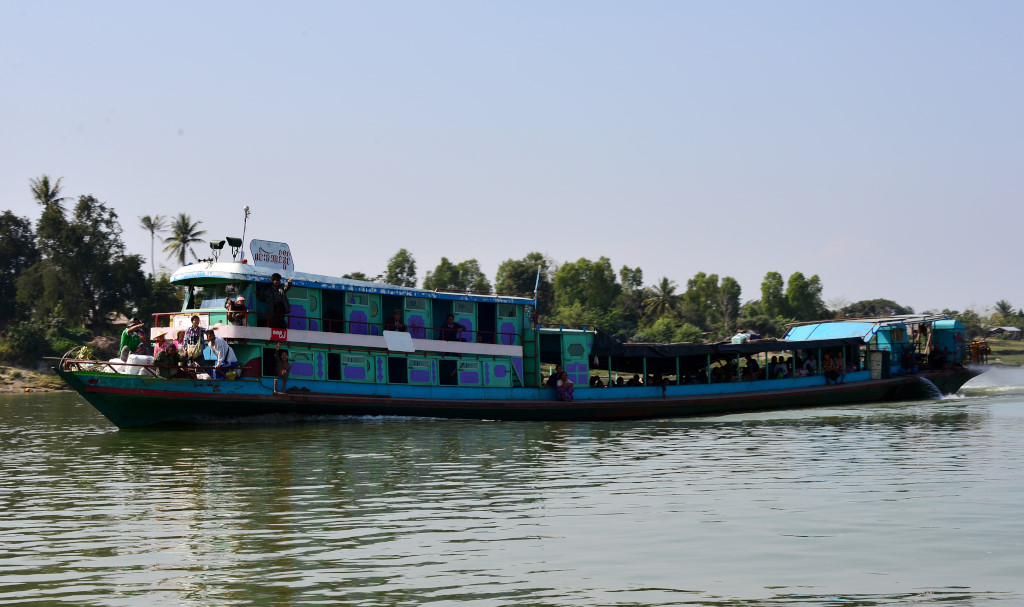
There are people camped out on the roof of the boat, which I suppose would be a better option from the perspective of photography, but at this point I couldn’t be bothered. I doubt any of the scenery will be that breathtaking on the way. The last bench before the raised platform at the bow of the boat only has a bag lying on it, and as I motion to occupy it, the group of women across the aisle wave to me that it is occupied. Well, now it is occupied by one more person, and that will be me.
Strangely enough, on the boat there are police and military, but no one says anything to me as to whether I should be able to take the boat or not.
From the map, the trip to Katha looks like it would be short, but it takes some four hours by boat. The trip is taking us out of Kachin State and into the Sagaing Region, which represents the northern border of the Burmese cultural region.
The banks of the river on either side during the journey are mostly flat and uneventful. An occasional settlement appears, although the size of the settlement visible from the river may not be indicative of the actual size of the larger town. The occasional majestic tree is framed against the banks of the stark landscape.
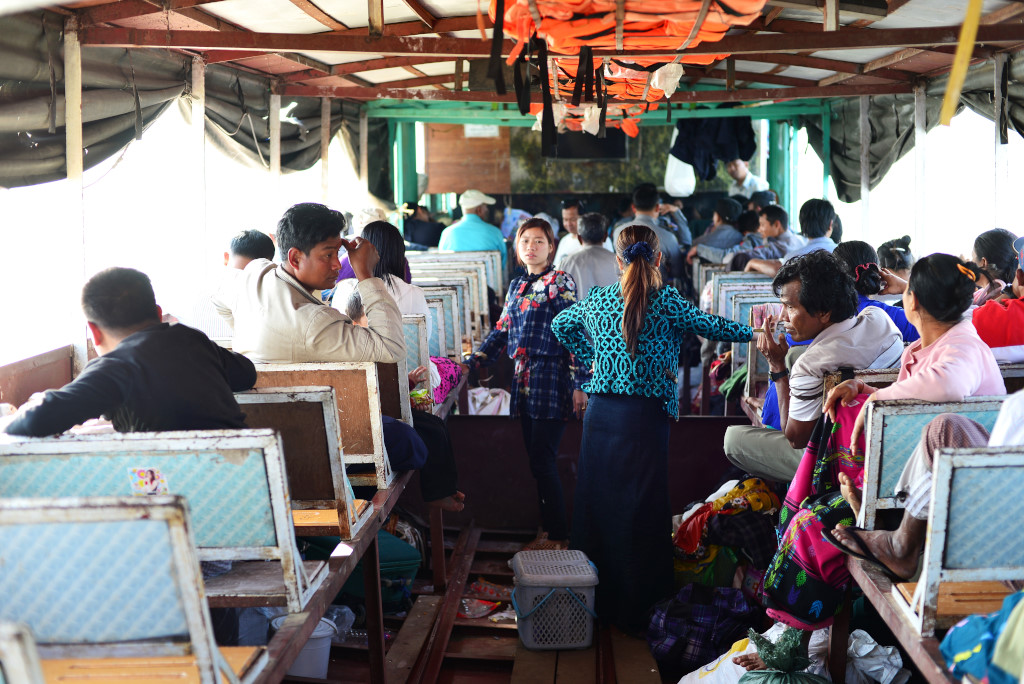
The boat navigates from one side of the riverbank to the other, what with the risk of breaching the extensive sandy shoals that emerge this late in the dry season. The direction of the river is often confusing due to the profusion of complicated sand bars. The occasional corn crops extend to the edge of the river banks.
The women and children on board comprise another extended Nepali-Burmese clan off on some jaunt to Katha to visit family and relatives, quickly inviting me to make myself comfortable, my neighbor speaking a reasonable degree of English, as she lived in Bangkok for many years.
I am asked again what I think of Burmese food, and of course, I don’t hesitate to tell them what I think. Being Hindu, she is vegetarian, which of course presents its own challenges with food.
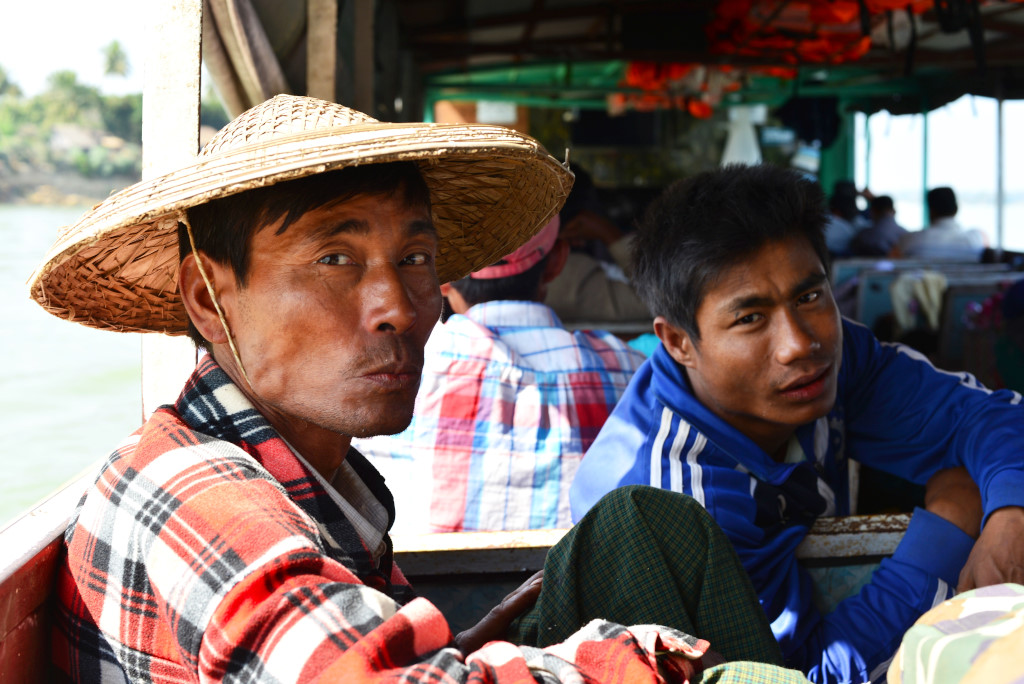
When the ticket collector finally comes around, my travel companion is incensed that I would be charged 7,000 kyat for the boat trip. I try explaining to her the conditions for travelers – our movements are controlled, and in hotels as well as on these boats we pay more.
The children cavort wildly on the boat, driving themselves into a frenzy, the women immensely patient as the young ones find an endless amount of stimuli, only rarely bursting forth in agonized crying, which typically dissipates quickly, although I am not very comfortable with their wild antics around the sharp metal edges of the benches.
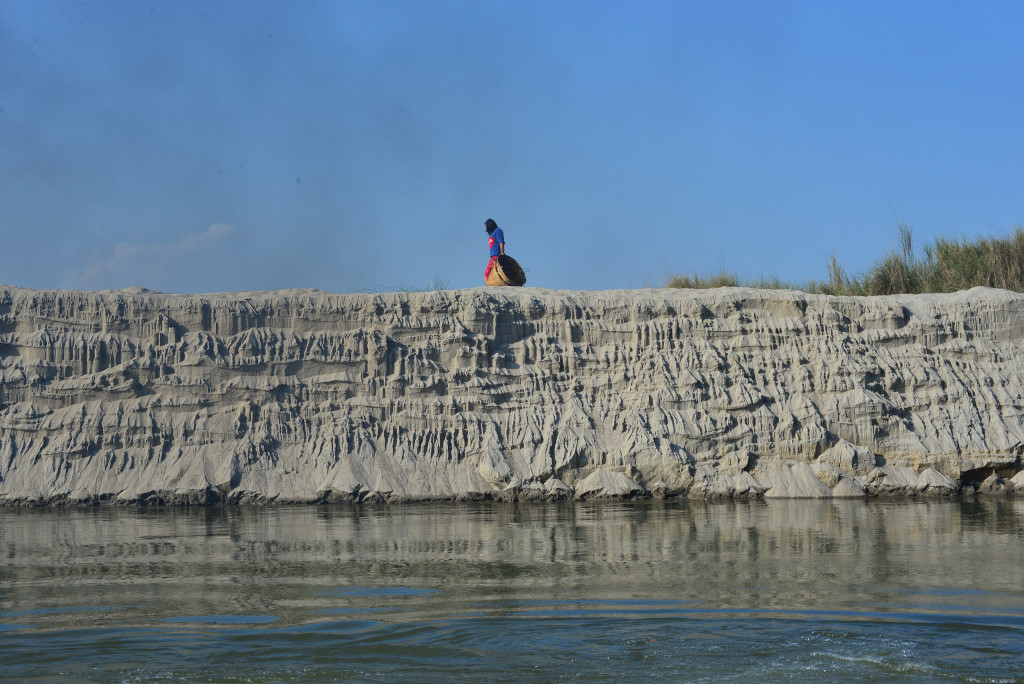
The soldier seated in front of me is engrossed in his soccer newspaper the better part of the journey, although occasionally he looks up at me somewhat skeptically as I snap photos of the passing barges and freight boats, if not outright contemptuously, as if I really was desperate for entertainment, which I suppose is somewhere true.
People on the boat treat the river like a garbage dump, liberally tossing their Styrofoam containers overboard, never mind the constant spewing of betel juice, which is at least biodegradable.
Finally, we arrive at Katha. The town is framed in green and mountains, although I doubt any of the hills will be visible from the town itself.
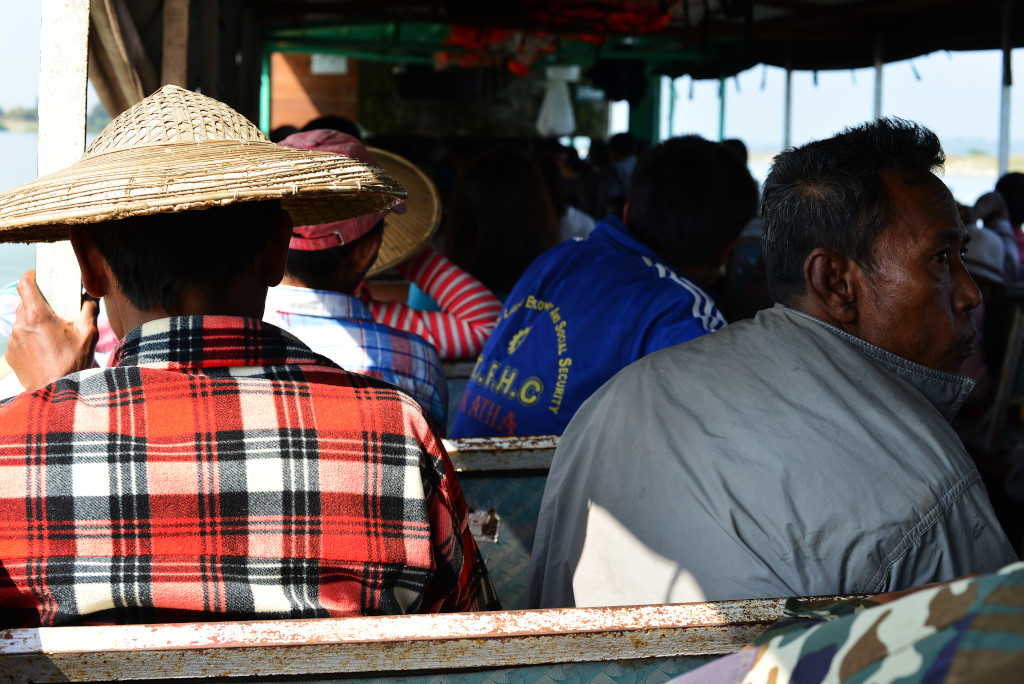
As the boat berths in front of the steep slope at Katha’s waterfront, a line of men stand waiting along the shore. As the boat approaches, they assume a slightly crouching poise, as if to launch themselves into the water, although the boat is their target. When it is just close enough, an absolutely frenzy erupts, the men crawling frantically through every window, door, over passengers, berating everyone on the boat to use their porter services. Passengers argue vehemently with the touts.
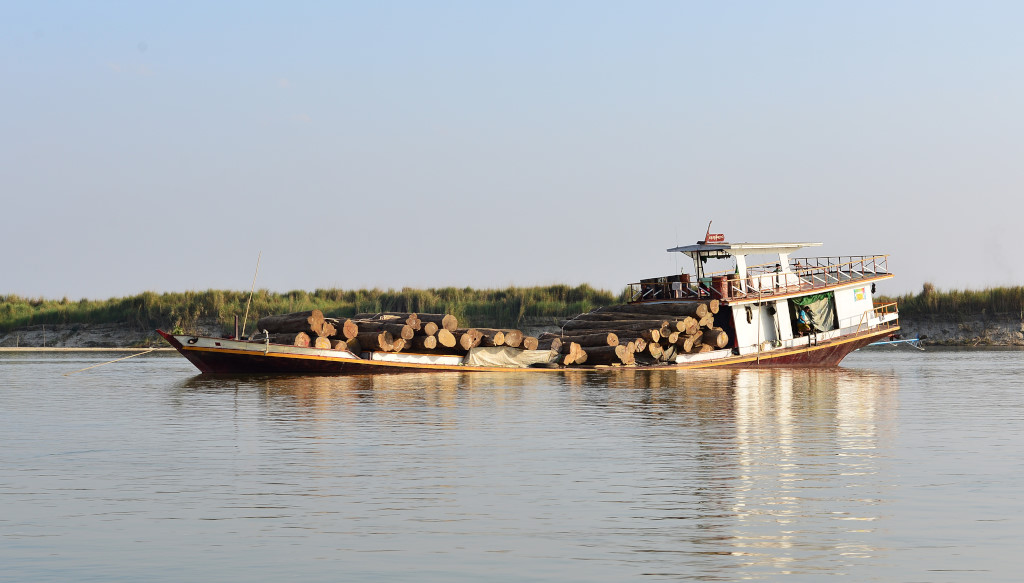
I wait politely for them to clear the passage so that we can disembark without their harassment. Finally, I lose my patience, forcibly displacing their bodies with my own bulk. At street level, the ground is packed with taxis and people, touts now chasing after me to use their transport, but a few paces beyond the jetty, I enter into the tranquil world of Katha, the slightly worn teak houses peering through the trees over the gunmetal sheet of water and the vast sandbanks that would be submerged into a minor ocean at the time of flood.
A long wiry Chinese and older Norwegian greet me with surprise as I pass by their modest guesthouse, the two having met on the boat the day before, themselves trying to figure out how to proceed north.
I caution them to not go directly to Bhamo, as it is a very long trip, some 9 or 10 hours, even though it doesn’t seem as much on the map.
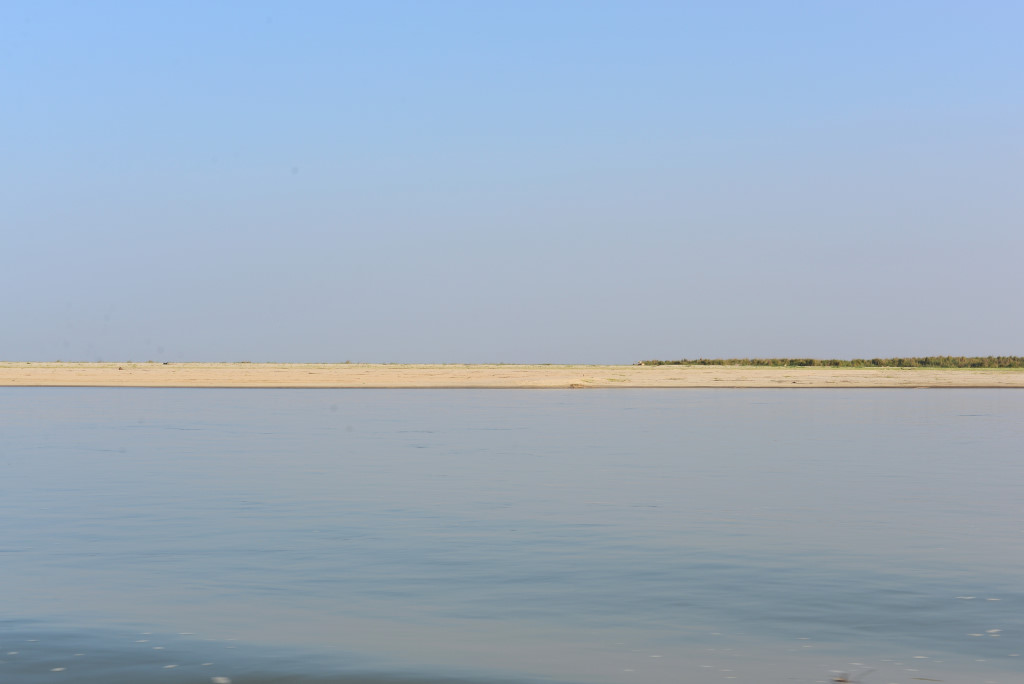
After much chatter, they point me in the direction of the Eden Guesthouse that – according to the Lonely Planet – is the go-to option in town, with internet and the works. I am met with quizzical to utterly confused stares when I point to the name of the guesthouse in my book, getting increasingly fatigued as my journey on foot continues with the heavy backpacks and no hotel in sight.
Modest two-story bungalows of stone and wood line the dirt roads in various states of decay, atmospheric in the fading light, a sprawling temple, a lot of dogs lying in wait by the roadsides and on the temple lots, and finally, much further, I am about to give up.
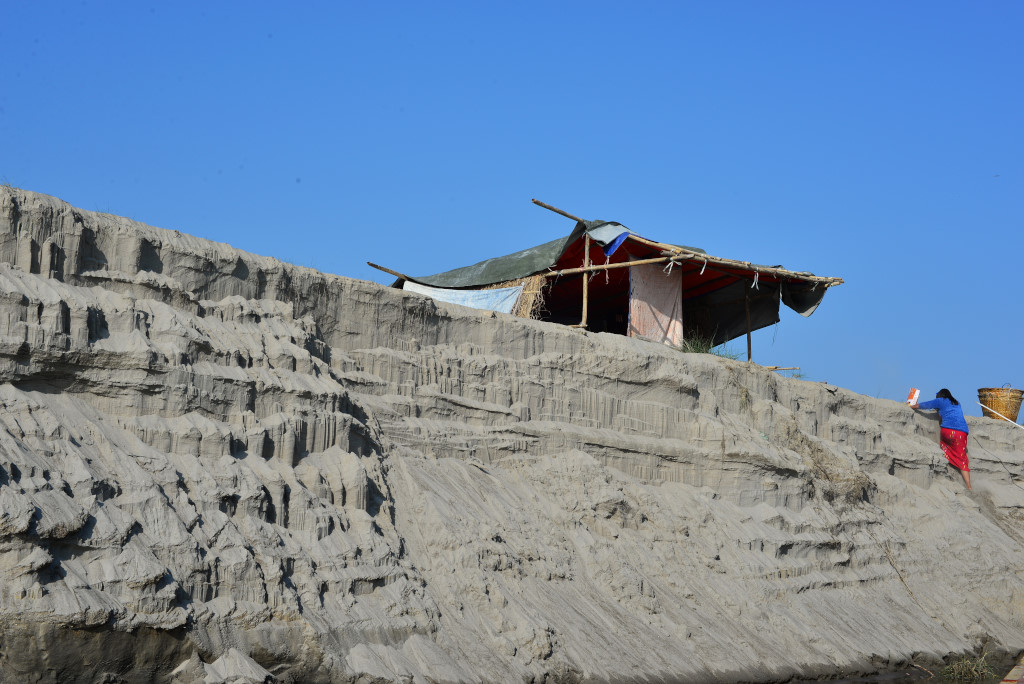
Outdoor bars sprawl onto large lots from barn-like, cavernous interiors, festooned with coloured lights, but no sign of the Eden hotel. A man points me in the direction I came from – there, that’s it. I had walked by the innocuous establishment fronted with a street-level eatery, but the tiny place is indeed it.
The young, soccer outfit-clad receptionist finally appears to show me to the rooms, small, shabby affairs with small doors, an array of obscure electrical controls, the walls grimy and paint faded, the furniture covered in grime, the curtain falling off the window as he attempts to open the window, the window frame in turn falling out of the sill, no mosquito nets covering the windows in the first place, the decor deplorable at best, all for 25,000 kyat – seriously? This is the swank place the travel guide raved about?
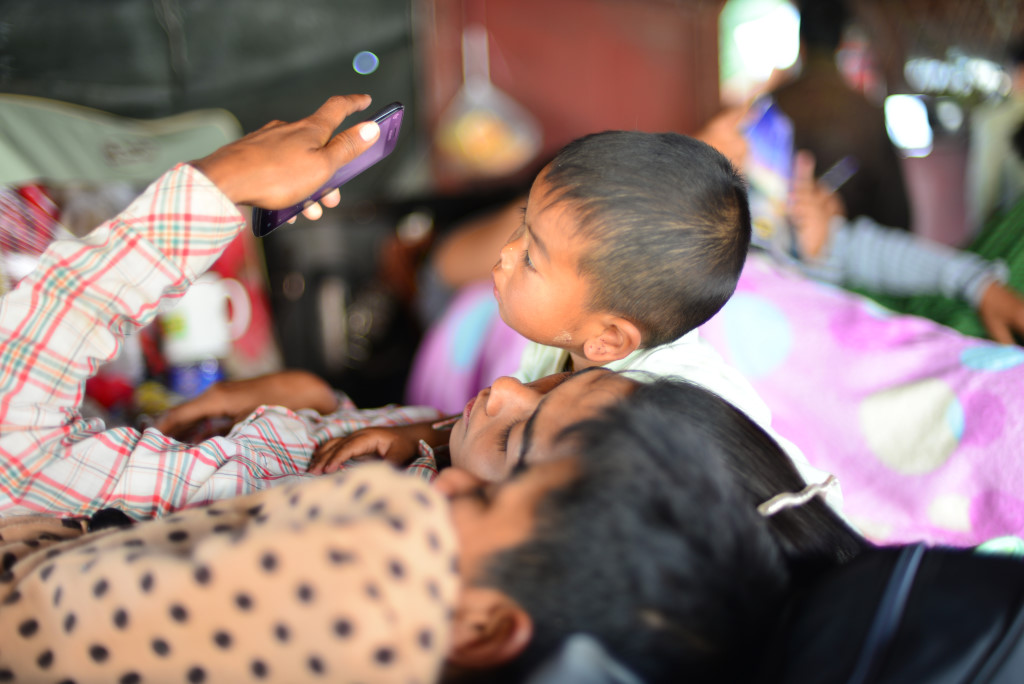
After viewing a few rooms, I would just as well not waste my money here, but there are no other options in town, and the receptionist lowers the rate for the largest room to 20,000 kyat. Fine, I will make do, wiping the grime from the chair and small tables. The important thing is that I can get an internet connection – or so I think, a connection occurring when I set up laptop initially to check whether the alleged connection is anything more than a chimera, but it lasts no more than a few moments, and then is gone.
He assures me that there is continuous power in the building, but the power cuts out and the generator jumps in three times during our conversation.
Rounding the corner onto the river road, there isn’t much to see at this time of night in terms of eateries, and the one Chinese establishment the Norwegian referred to now shuttering. Stacks of merchandise are outlined against the backlit doorframes, dim lighting peering from behind the open windows on the second floors of the teak framed-houses. One eatery is still open, but entirely bereft of clients, a pair of young face-chalked women working silently on a table littered with vegetables, a stern older Chinese-Burmese man instructing me that the restaurant only has Burmese food.
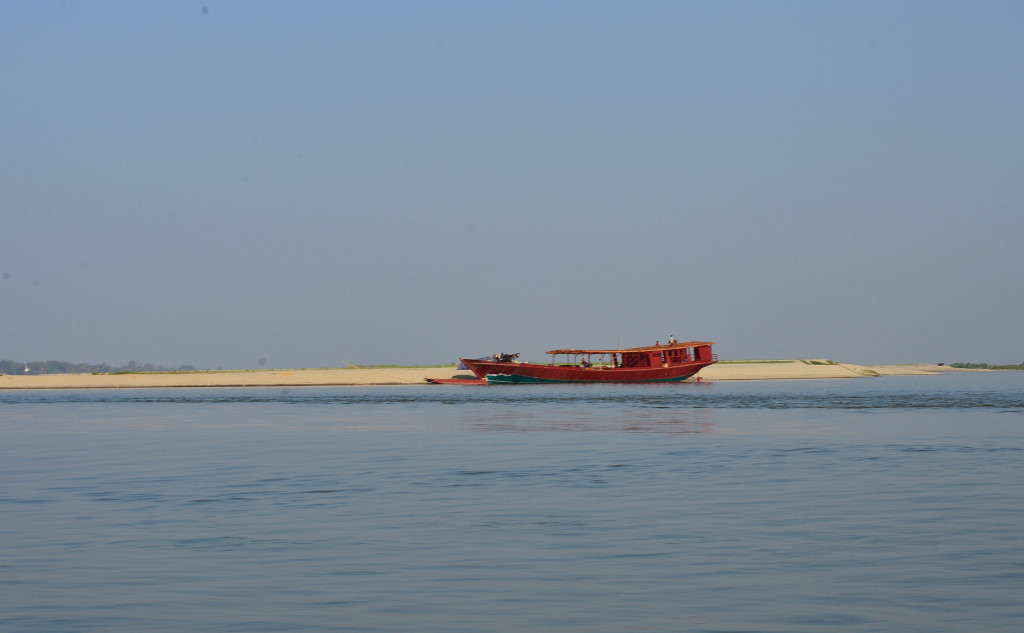
Well, perhaps if I inspect the contents of the bowls in the kitchen area, I could ascertain whether any of the dishes are made with fish paste. The king prawns 4,000 kyat? I’ll pass – but the fish looks a lot more inviting. 1,800 kyat for the tiny dish of curried fish would be over the top, were it not for the array of side dishes that are automatically served with the main dish and rice. The fish curry consists of a few pieces of a cooked meaty white fish in a peppery oily brew.
The side dishes include the classic sour green soup, cooked sweet kernel corn, lima beans stewed in spicy tomato paste, lightly curried cauliflower, an anchovy salad with shredded white onion, crushed chili and garlic, chopped parsley, what tastes like capers, an approximation of mayonnaise, and fish sauce, into which the plate of greens are to be dipped into.
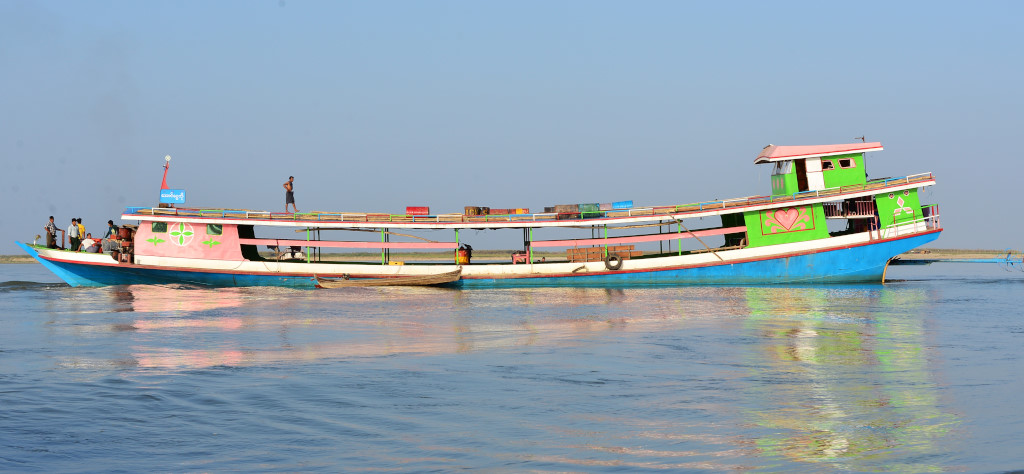
The owner asks me what I think of the food, and I try voicing my thoughts, but think the effort is simply wasted on him. He stares blankly at me as I elaborate, including my comments on the uniqueness of Burmese food, how many ingredients would be expected in parts of southern or central Europe, but not in Southeast Asia. It certainly would help if I spoke Burmese …
I love Burmese food, as long as it doesn’t contain fish paste …
I am overcome by exhaustion after eating, provoking the question as to whether it is because the food is heavily salted or loaded with MSG.
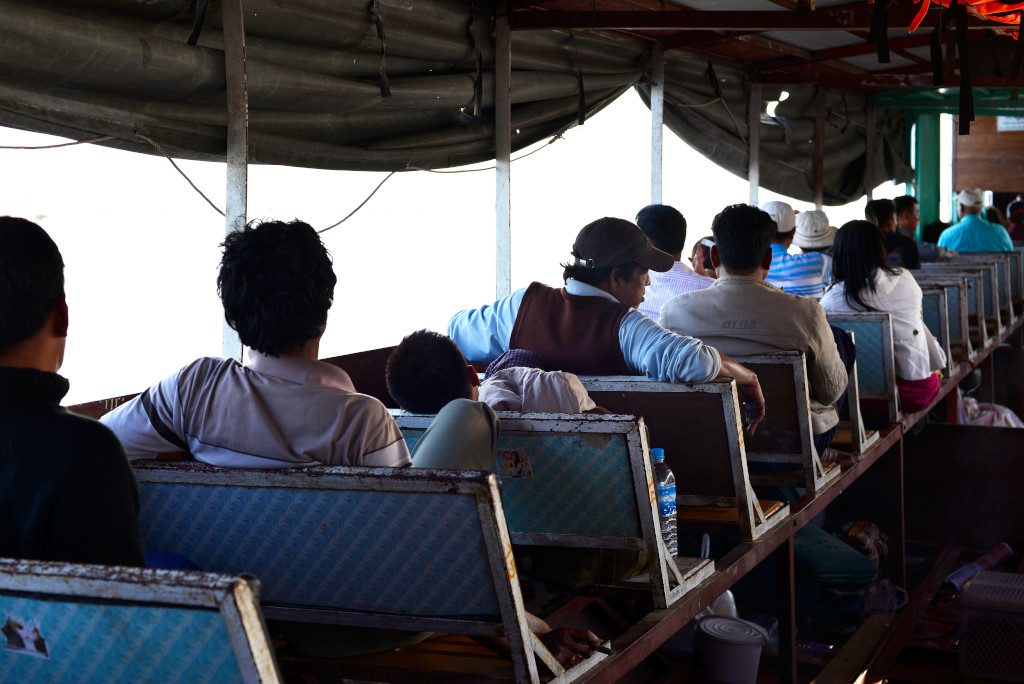
Wandering along the riverfront, faint lights glimmer from the far side of the river, and drive home the vast girth of the Irrawaddy river. There is no traffic on the curving road, only a few odd parties of young men wrapped in their lungyis huddled in the darkness, checking their phones or chatting quietly, dim lights visible from the longboats parked below, the freshness of the air invigorating. The stars twinkle alluringly in the sky, a very good reason not be in a polluted cesspool such as Mandalay.
I inevitably get lost on the longer trek back to the very inappropriately-named Eden hotel, the stray dogs lying on the streets not bothering to get up and display any aggression. Back to the main road, with its illuminated eateries, stopping in a store to buy some water, or perhaps juice, although nothing is available other than heavily sugared drinks.
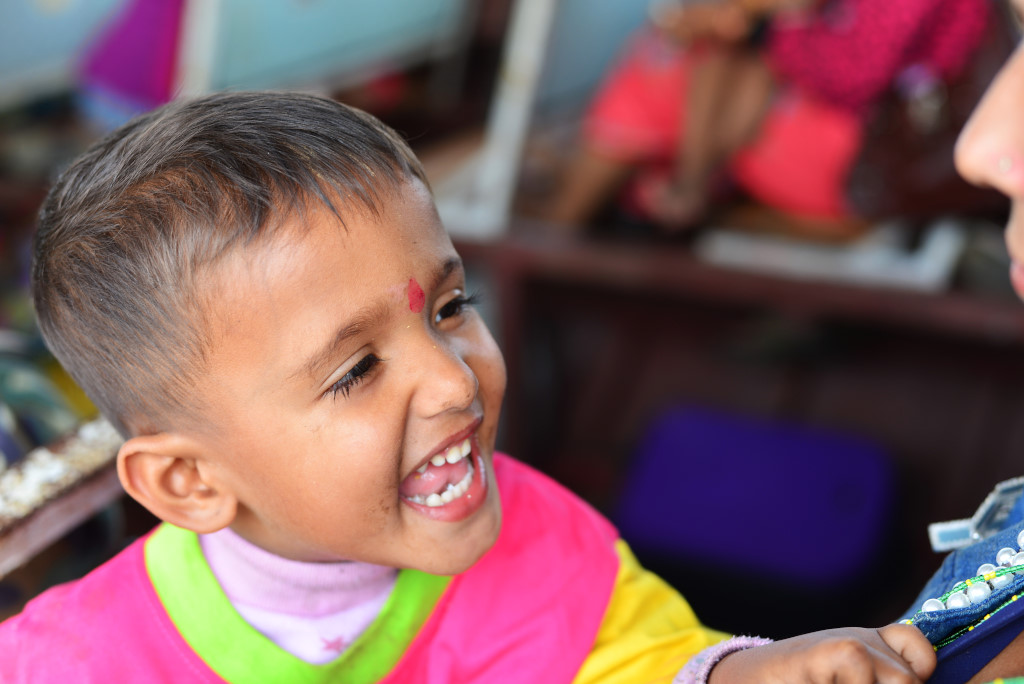
A young local asks me in faltering English if I know what I want. I initially don’t answer, as I am not sure, although he eventually probably regrets having provoked a tirade about Burmese social politics. He does maintain some degree of interest, however, but then is hardly a very conventional local, as he is an optician originally from Bhamo, who has just opened an optical specialty shop right here in Katha.
He tells me the reason people in Myanmar don’t wear glasses is because there aren’t remotely enough opticians available to provide the necessary medical services. The retail offering in this country is extremely basic, and the sale of something like eyeglasses represents a remote outlier. Then again, in the western countries, retailers face a completely different challenge, and that of e-commerce.
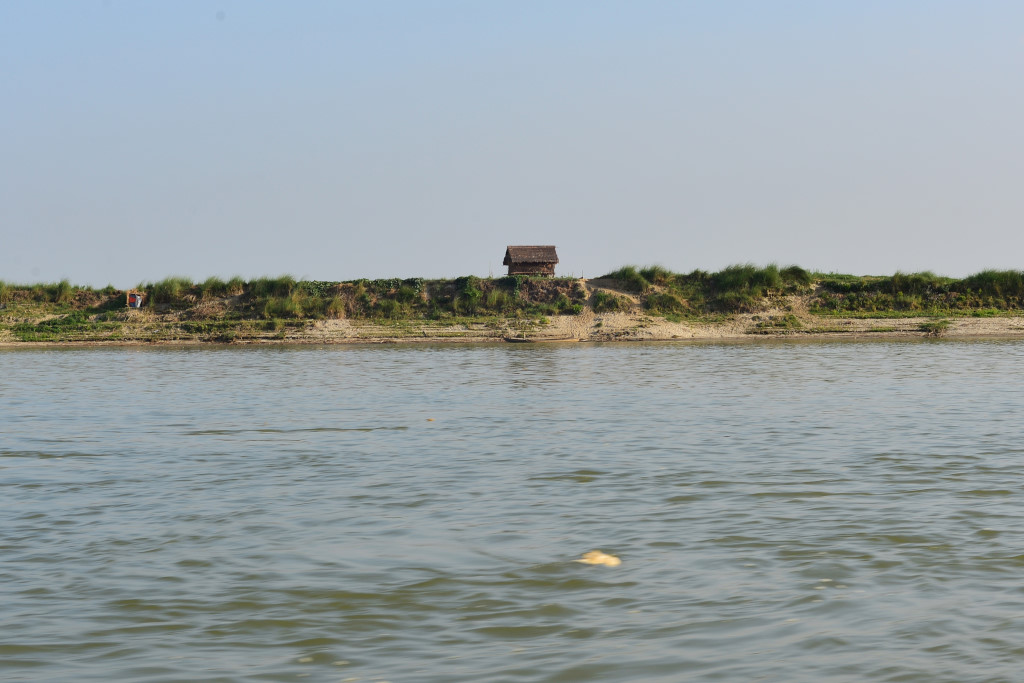
I have no idea how the young man will be able to make pricey optical ware fly here, given the limited income that people have. Spending $100 on a pair of Ray Bans is not the world’s most obvious consumer choice when you make a few dollars a day.
Back to the hotel, there is absolutely no internet access. The air conditioning works, the lights work, the ridiculous mutt next door yelps frantically, but there is no internet connection. I check downstairs, but seated amongst the group of hipsters checking their phones, I still get no connection …
